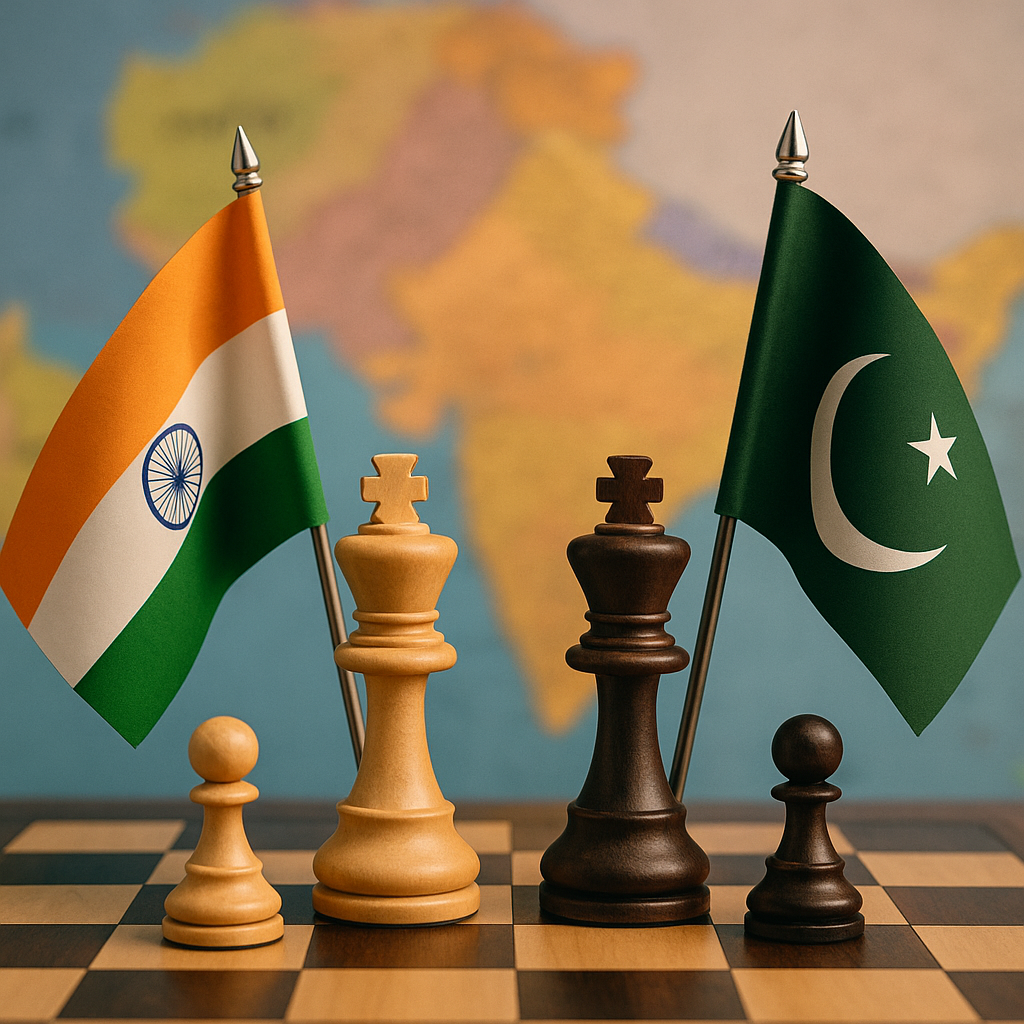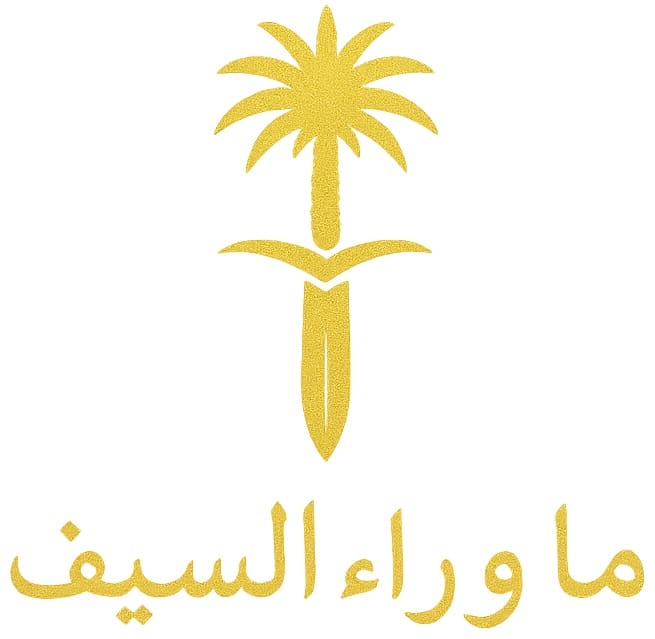Beyond the Battlefield: Soft Power Lessons from the Indo-Pakistani Conflict

About the Series: Beyond the Battlefield explores how public diplomacy operates in the shadows of war, where narratives are as strategically deployed as troops. This series investigates how states craft, manipulate, and contest stories during armed conflicts and proxy wars to win hearts, shape perception, and justify action on the global stage.
White Paper | Beyond the Battlefield
Prepared for:
Gulf Policymakers, Multilateral Partners, Diplomats, and Strategic Communicators
Executive Summary
The Indo-Pakistani conflict of 2025 marked a turning point in the understanding of modern warfare, not as a purely kinetic event but as a global communications theatre. As Pakistani and Indian forces clashed with advanced weaponry, the world watched, analyzed, and judged not just military outcomes but the narratives, alliances, and reputational signals behind the weapons.
This white paper analyzes how soft power was projected through defense choices, media framing, and diplomatic posturing. It offers lessons for Gulf states, the Global South, and international institutions seeking to enhance their influence and strategic resilience in the 21st century.
1. Introduction: Conflict as Communication
In the 21st century, conflict is not just a contest of arms; it is a test of image. The Indo-Pakistani confrontation revealed how war is repackaged into narrative capital, influencing not only battlefield momentum but also international alliances, arms procurement, and geopolitical positioning.
Key questions now dominate post-conflict analysis:
- Whose version of the story prevailed?
- Which technology enhanced, rather than destroyed, reputations?
- Which country appeared modern, reliable, and restrained?
2. The Quiet Campaign Behind the Guns
In the latest chapter of the Pakistan-India conflict, the battlefield has become a proving ground not just for national defense but for global arms diplomacy. Pakistan, a longtime Chinese ally, has emerged as a frontline showcase for Beijing’s military exports. The J-10C fighter jet, armed with China’s PL-15 long-range missile, reportedly achieved a significant milestone: shooting down Indian aircraft, including the much-touted French Rafale. This marks the first known combat use of the J-10C and PL-15, offering China a powerful, real-world demonstration of its military capabilities.
Meanwhile, India fielded its own Western-aligned arsenal: French-made Rafales, U.S. Apaches, and Israeli air defense systems. The clash between these two military ecosystems, Chinese and Western, has elevated the conflict into a high-stakes arms exhibition. If the reports of Chinese hardware outperforming its Western rivals are confirmed, it could redefine global perceptions of Chinese defense technology. For the Global South, often caught between budget constraints and geopolitical loyalties, the battlefield becomes a persuasive sales pitch. The question now is not just whose side wins but whose weapons work.
3. The Soft Power Ripple Effects
Defense Technology as Branding
Military platforms now act as reputational assets. A fighter jet’s performance affects not only national defense outcomes but also global arms deals. Countries across Africa, the Middle East, and Southeast Asia watch closely to gauge supplier reliability, logistics agility, and geopolitical signaling.
Reputation and Restraint
Pakistan’s calibrated messaging on escalation control and India’s demonstration of modern hardware became talking points across international diplomacy circles. Who appeared responsible? Who appeared dominant? These questions influence everything from soft loans to alliance invitations.
Arms as Instruments of Influence
For Beijing, this is more than a question of hardware. The credibility of Chinese arms in a high-stakes conflict has far-reaching implications for its broader soft power strategy. Unlike Western arms exports, which are often bound to political preconditions, Chinese defense partnerships are pitched as practical, accessible, and ideologically neutral. This resonates with governments seeking strategic autonomy without geopolitical entanglement. Should Chinese weapons prove effective, they reinforce China’s brand as a serious technological and military actor capable not only of manufacturing but of innovating at a competitive global scale. This success would not only fuel arms sales, but deepen Beijing’s political and security partnerships in Africa, the Middle East, and Southeast Asia.
But Soft Power Is Fragile
Soft power, however, is not solely about performance it is also about perception. China’s longstanding narrative of “non-interference” risks erosion if its arms are seen as fueling instability or conflict. If weapons fail or linked to civilian harm, the blowback could be swift, especially in an era where wars are dissected in real time on digital platforms, and reputations can rise or fall in a news cycle.
Moreover, the presence of Chinese arms on Pakistan’s side may reinforce the West’s counter-narrative: China is not a neutral actor, but a strategic competitor investing in proxy conflicts to reshape regional balances.
4. Implications for Gulf States and the Global South
A. Narrative is the New Deterrent
Military capability without narrative control is a liability. Regional powers must pre-position diplomatic statements, media assets, and third-party validators before a crisis hits.
B. Alignments Are Watched, Not Just Declared
Every arms deal is a foreign policy signal. Procuring from China, the U.S., or Türkiye sends a message not only about capabilities but also about worldview and strategic orientation.
C. Soft Power Can Be Grown From Conflict Without Fighting
Countries that are not participants in a war can still build influence by:
- Convening peace talks
- Providing humanitarian aid
- Offering post-conflict mediation
- Hosting narrative forums
5. Strategic Recommendations for Policymakers, Media, and Multilateral Partners
A. For Gulf Governments and Strategic Planners
- Institutionalize Narrative Warfare Units: Within Ministries of Foreign Affairs and Defense, establish divisions for strategic storytelling during conflict and crisis.
- Use Procurement Strategically: Factor in soft power returns such as reputation, interoperability, and supplier narrative support when selecting defense partners.
- Position the Gulf as Neutral Conveners: Leverage neutrality and diplomatic capital to mediate future regional and global conflicts, especially in the Global South.
B. For Multilateral Organizations and Development Actors
- Integrate Narrative Architecture into Peacebuilding: Support developing countries in crafting post-conflict narratives that promote dignity, reconstruction, and agency.
- Create a Global Conflict Reputation Index: Track how nations’ reputations rise or fall during conflict to help development partners tailor diplomacy and capacity-building.
C. For Media and Strategic Communications Ecosystems
- Train Regional Analysts and Journalists: Build local capacity to decode defense strategy, interpret geopolitical symbolism, and counter disinformation.
- Leverage Soft Power Influencers: Partner with academics, artists, and former diplomats to frame complex events in ways that resonate across cultures and borders.
D. For Think Tanks and Academic Institutions
- Launch “Conflict & Reputation” Research Tracks: Study how battlefield performance, narrative control, and soft power interact, and develop new metrics for influence.
- Host Simulation Exercises: Convene cross-regional actors for wargaming not just battles but messaging outcomes, particularly in the Global South context.
E. For Youth Networks and Civil Society
- Empower Youth as Conflict Observers: Train young people in digital diplomacy, narrative analysis, and public communication during global events.
- Establish Soft Power Labs: Incubate regional hubs where young leaders design campaigns, visual storytelling, and reputation strategies aligned with national values.
Conclusion: A Battlefield Watched by the World
The Indo-Pakistani conflict was more than a clash of armies, it was a clash of systems, symbols, and stories. The real winners were not just those with superior firepower, but those who projected reliability, coherence, and modernity to the world.
This conflict, though geographically contained, carries global implications. It is a reminder that the tools of war are also tools of diplomacy, and that the weapons a nation exports are as much about messaging as they are about mechanics.
In this moment, China’s soft power is not expressed through speeches or summits, but through systems, strategy, and how its influence is felt on and beyond the battlefield. The real contest is not who wins the war, but who shapes the story that follows.
